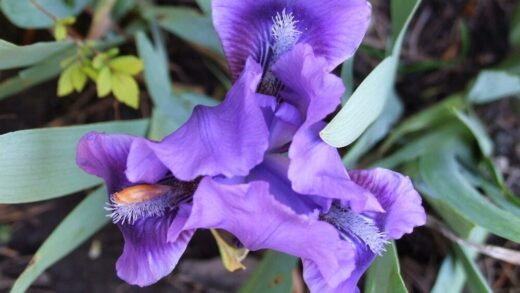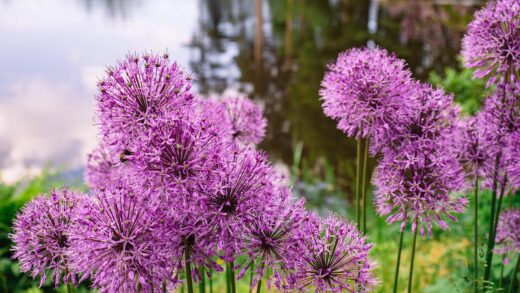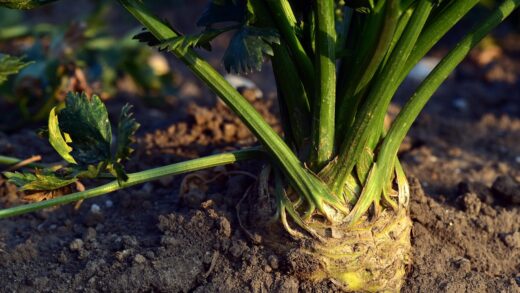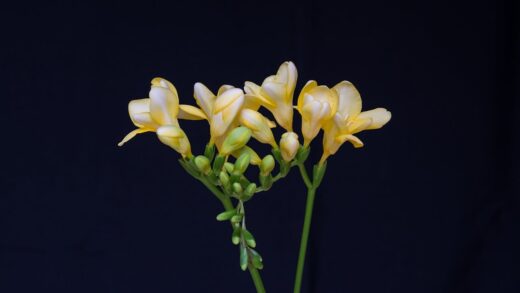The light requirements of biting stonecrop are simple and unambiguous: it is a quintessential sun-loving plant that demands abundant, direct sunlight to achieve its full potential. To cultivate the dense, vibrant, carpet-like growth and profusion of brilliant yellow flowers for which it is celebrated, a location that receives a minimum of six to eight hours of unfiltered sun each day is paramount. This exposure to intense light is the primary environmental factor that dictates the plant’s health, appearance, and overall vigor. Its entire physiology is adapted to open, sun-drenched habitats, making light availability a non-negotiable aspect of its care.
In the world of succulents, light is not just a source of energy for photosynthesis; it is also a powerful sculptor of form and color. For biting stonecrop, high light levels are what maintain its compact, low-growing habit. The intense sun encourages short internodes (the spaces between the leaves on the stem), resulting in a tight, dense mat of foliage. This form is not only aesthetically pleasing but also functional, as it helps the plant conserve moisture and suppress competing weeds.
Furthermore, the quality and intensity of the light directly influence the coloration of the foliage. While the base color is a bright, lively green, plants grown in full, blazing sun often develop attractive reddish or bronze tints on the tips of their leaves. This is a natural “stress” response, similar to how many other succulents develop richer colors in high light, and it adds another layer of visual interest to the plant. Without sufficient light, these vibrant highlights will not appear.
This article will delve into the critical role that sunlight plays in the life of biting stone-crop. We will explore how different levels of light exposure affect its growth, coloration, and flowering. We will also discuss how the plant adapts to less-than-ideal light conditions and provide guidance on how to recognize and remedy issues caused by insufficient sun, ensuring your plant displays the robust character and dazzling beauty it is known for.
The importance of full sun exposure
Full sun exposure is the cornerstone of successful biting stonecrop cultivation. The term “full sun” in horticulture generally refers to a location that receives six or more hours of direct, unobstructed sunlight per day. For this particular species, more is almost always better. A spot on a south-facing slope, in an open rock garden, or along a sun-baked pathway provides the ideal conditions. This high level of light energy fuels the plant’s photosynthesis, allowing it to grow vigorously and build up the reserves needed for its spectacular flowering display.
The benefits of full sun extend beyond just energy production. The intense light and associated heat help to keep the foliage and soil surface dry, which is critical for preventing the fungal diseases that are this plant’s primary nemesis. In a shady, damp environment, the dense foliage can trap moisture, leading to rot and decay. In a sunny, open location, any moisture from rain or dew evaporates quickly, maintaining a healthy, dry environment around the plant’s crown.
This requirement for full sun also dictates its best uses in landscape design. Biting stonecrop is a perfect choice for xeriscaping, green roofs, and other water-wise garden applications where sun exposure is high and rainfall is less frequent. It excels at filling the gaps between paving stones or spilling over the edges of hot, dry retaining walls. Using it in these challenging, sun-drenched locations plays to its strengths and ensures it will perform with minimal maintenance.
When selecting a planting site, it is crucial to consider the sun’s path throughout the day and across different seasons. A spot that is sunny in the morning might be shaded by a tree or building in the afternoon. Observe the potential location for a full day before planting to confirm that it meets the “six-plus hours” requirement. Providing this foundational need for sunlight is the single most important step you can take to guarantee a healthy, beautiful patch of biting stonecrop.
How light affects growth and coloration
The direct correlation between light intensity and the physical appearance of biting stonecrop is striking. In an environment with high light levels, the plant’s energy is directed towards dense, compact growth. The stems remain short and sturdy, and the small, succulent leaves are packed tightly together, creating a thick, cushion-like mat. This growth habit is a direct adaptation to conserve water and withstand the harsh conditions of its native, sun-exposed habitats. It is this compact form that makes it such an effective and attractive ground cover.
Flowering is also heavily dependent on light. Biting stonecrop produces its charming, star-shaped yellow flowers in abundance only when it receives enough sunlight to store the necessary energy reserves. In full sun, the plant will be covered in a blanket of blooms in late spring and early summer, creating a stunning visual impact. As light levels decrease, the number of flowers produced will diminish dramatically, and in significant shade, the plant may not bloom at all.
Coloration is another aspect directly controlled by sunlight. While the plant is typically a bright apple green, strong sunlight acts as a beneficial stressor that brings out a wider range of hues. The tips of the leaves can flush with shades of red, bronze, or orange, especially during periods of drought or temperature extremes. This dynamic coloration adds seasonal interest and depth to the plant’s appearance. In lower light, the foliage will remain a uniform, often darker, shade of green as the plant produces more chlorophyll to compensate for the reduced light.
Essentially, sunlight acts as a natural growth regulator for biting stonecrop. It keeps the plant low and tight, encourages a prolific bloom, and paints the foliage with vibrant highlights. Without this key ingredient, the plant’s character changes entirely, and it loses many of the aesthetic qualities that make it so desirable for gardeners.
Adapting to partial shade conditions
While biting stonecrop is unequivocally a sun-lover, it does exhibit a degree of adaptability and can tolerate conditions of partial shade. Partial shade is typically defined as an area that receives between three and six hours of direct sun per day. In such a location, the plant will survive and grow, but its appearance and behavior will be noticeably different from a specimen grown in full sun. It is important for gardeners to understand and anticipate these changes if planting in a less-than-ideal light environment.
The most significant change in partial shade is the plant’s growth habit. In an effort to capture more light, the stems will elongate, a phenomenon known as etiolation. This results in a taller, more open, and “leggy” appearance. The dense, mat-forming character is lost, and the plant will look sparser and less tidy. The ground coverage will be less effective, and the plant may be more easily overtaken by weeds that are better adapted to lower light.
Flowering will be significantly impacted in partial shade. The plant will produce far fewer flowers, and the blooming period may be shorter. In locations that are on the shadier end of the spectrum (around three hours of direct sun), it may fail to bloom entirely. The vibrant green foliage will also take on a darker hue and will not develop the reddish or bronze stress colors, resulting in a more uniform but less dynamic appearance.
While the plant can adapt, it is also more vulnerable to problems in shadier conditions. A shadier spot is often a damper spot, as the sun is not present to dry out the soil and foliage. This increases the risk of fungal diseases and root rot, especially if the soil drainage is not perfect. Therefore, if you must plant biting stonecrop in partial shade, it is absolutely essential that the soil is exceptionally well-draining to compensate for the increased moisture retention.
Recognizing and correcting light-related issues
Identifying problems related to inadequate light is straightforward if you know what to look for. The primary symptom is the aforementioned etiolation, or leggy growth. If your biting stonecrop is tall, with long, weak stems and sparsely spaced leaves, it is a clear sign that it is stretching in search of more sunlight. The plant will be reaching towards the strongest light source, so you may notice it growing unevenly in one direction.
Another key indicator of insufficient light is a lack of flowering. If your mature biting stonecrop plant fails to produce its characteristic yellow blooms during the growing season, and you have ruled out other issues like improper watering or nutrient imbalances, a lack of sun is the most likely culprit. Similarly, if the foliage is a deep, dark green with no signs of the lighter, brighter hues or reddish tips, it is a sign that the plant is not receiving the light intensity needed to produce these stress-induced colors.
Unfortunately, the only effective way to correct light-related issues is to increase the amount of light the plant receives. You cannot make a leggy plant compact again without changing its environment. The solution is to move the plant to a sunnier location in your garden. Carefully dig up the plant, trying to keep the root ball as intact as possible, and transplant it to a spot that receives at least six hours of direct sun per day.
If moving the plant is not feasible, you may need to alter the surroundings to increase light exposure. This could involve pruning overhanging branches from nearby trees or shrubs that are casting shade on the plant. Once the plant is in a location with adequate sun, the new growth will emerge in the desirable compact form. You can then trim back the old, leggy stems to encourage fresh, dense growth from the base and restore the plant’s attractive mat-like appearance.

















